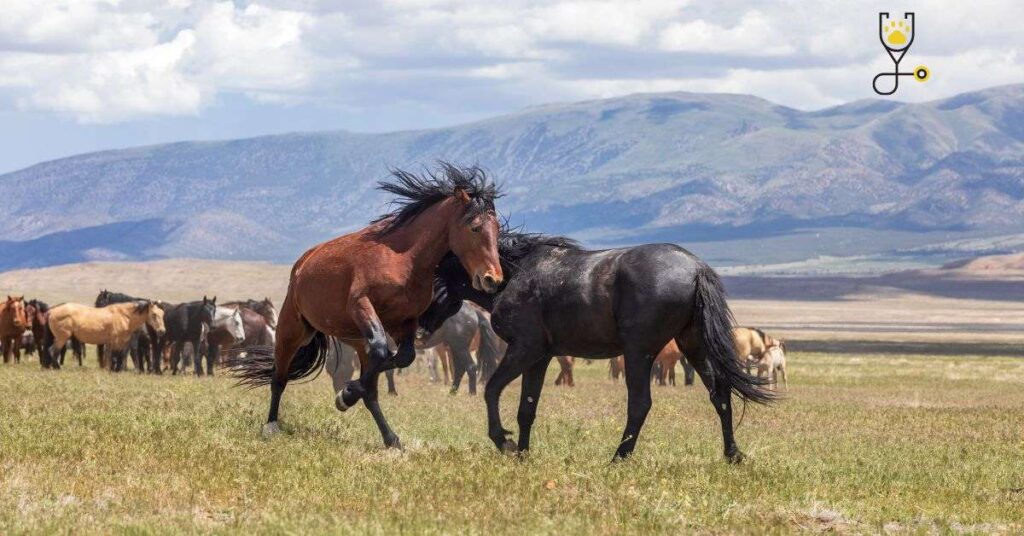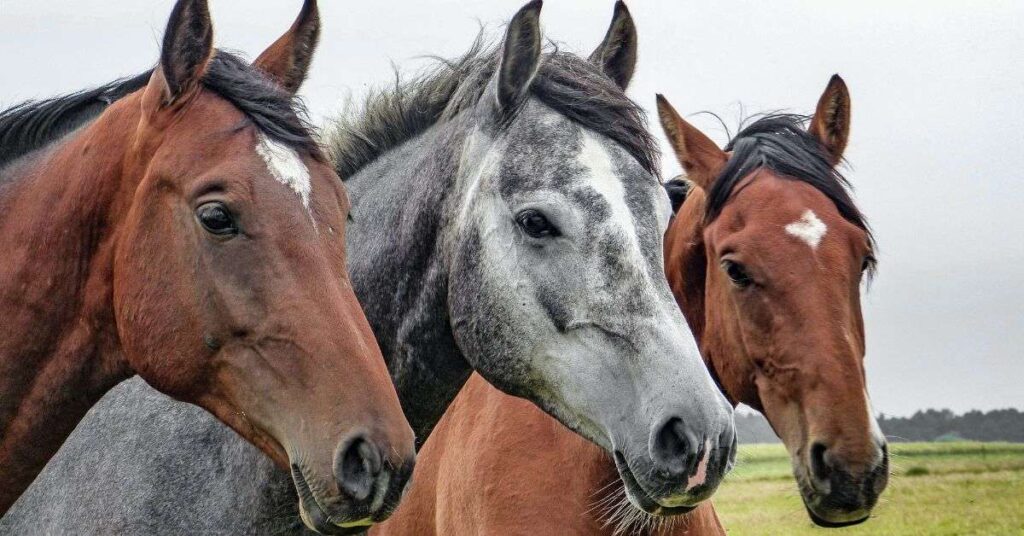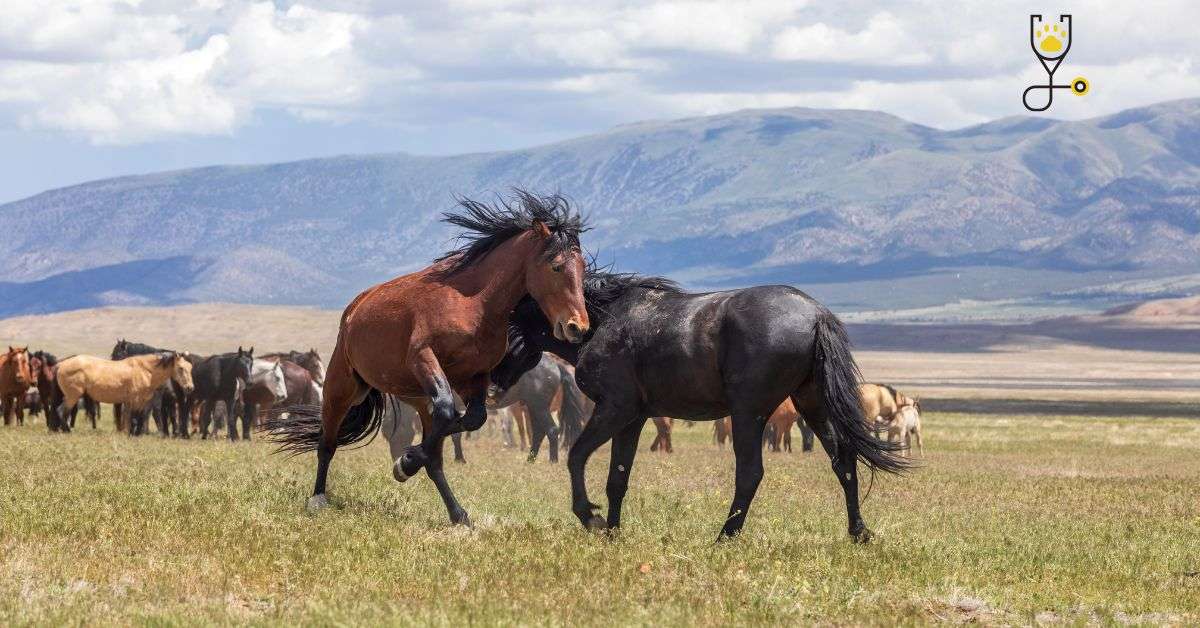A dominant horse can be a challenge to work with. In this blog post, we’ll discuss how to deal with this type of horse and ensure that your relationship is productive and beneficial for both horse and human. We’ll also look at some common signs that indicate a horse is trying to take charge.

Determining Dominance Behavior
There are a few key behaviors that can help you determine if your horse is trying to be dominant. These include:
1. Refusing to obey commands or follow directions
2. Excessive aggression or stubbornness
3. Challenge behaviors such as bucks, rears, or bolting
4. “Crowding” you or invading your personal space
5. Nipping, biting, or kicking
If you notice any of these behaviors, it’s important to take action right away. Allowing a horse to become too dominant can lead to serious behavioral problems and even injuries.
Learn More About Horse: The Ultimate Guide To Ownership & Care
Responding to Dominance Behaviors
The best way to deal with a dominant horse is to establish yourself as the leader. This doesn’t mean being aggressive or overly forceful, but it does mean being consistent with your commands and expectations. You should also make sure that you are providing clear direction and leadership when working with your horse.
There are a few specific things you can do to assert your dominance and leadership role:
1. Be firm and consistent with your commands. Don’t give in if your horse doesn’t immediately obey.
2. Maintain calm energy when working with your horse. Avoid getting angry or frustrated, as this will only escalate the situation.
3. Establish clear boundaries and limits with your horse. Let them know what they can and cannot do, and be consistent in enforcing these rules.
4. Be aware of your body language and make sure you are communicating assertiveness and confidence.
5. Reward your horse for good behavior with treats, praise, or other positive reinforcement.
If you take the time to establish yourself as a leader, you’ll find that working with a dominant horse can be rewarding and enjoyable. Just remember to be patient, consistent, and firm in your interactions, and you’ll be able to develop a strong relationship with your horse.
Read More: How to Train the Hard-to-Bridle Horse.

Ground Rules for Dealing With Dominant Horses
When working with a dominant horse, it’s important to set some ground rules to ensure both horse and human are safe and happy. Here are a few things to keep in mind:1.
First of all, when dealing with a dominant horse, always wear a helmet. Even for groundwork. I would also suggest considering wearing a vest. The added layer will help you to feel more secure, and it will also protect you from kicks and bites.
Always carry a crop or dressage whip—one of the first rules of being able to deal with dominance is knowing how to correctly use a crop and not being afraid to use one. If your horse is getting fresh and trying to test you, give him a swift tap on the shoulder with the crop. This will let him know that you’re in charge and he needs to respect your space.
Once you’ve established your dominance, you’ll be able to work together much more effectively.
Working Under Saddle
It is not uncommon for horses to display dominant behaviors while being ridden. One of the most common signs of dominance is taking off, or refusing to stop when the rider wants to halt. Horses may also try to move faster than the rider wants to go, or they may choose their own routes instead of following the rider’s instructions. Dominance behaviors are often a result of the horse feeling like it is in charge of the situation. In order to correct these behaviors, it is important for riders to assert their authority and assert themselves as leader. This can be done through consistent training and by establishing clear rules and expectations for behavior. With time and patience, most horses will learn to respect their riders and respond accordingly.
Read More: How to Make a Stubborn or Lazy Horse Go Forward
Professional Help
Seek professional help if you are struggling to establish dominance over your horse. A trainer or behaviorist can offer guidance and support.
With these guidelines in mind, you’ll be able to safely and effectively work with a dominant horse. Just remember to be patient, consistent, and firm in your interactions, and you’ll be able to develop a strong relationship with your horse.

Closing Thought
If after reading all of this, you wonder why anyone would bother with a dominant horse, you would definitely be forgiven. Why bother going through all of that and potentially risking injury when there are plenty of horses out there?
Here is the thing: Most dominant horses are either ponies or come from certain stock horse lines. Ponies are intelligent and strong-willed by nature, and many people enjoy the challenge of working with them. Stock horses are prized for their agility, strength, and endurance. These qualities make them ideal for a variety of disciplines, such as rodeo and racing. So, while a dominant horse may require more patience and training than a more submissive one, many people feel that the effort is worth it in the end.
The accuracy of this article is based on the information that the author has gathered. The author has cross-referenced this information with other sources to ensure its validity. To the best of the author’s knowledge, this article is accurate and true. However, if new information arises or discrepancies are found, the author will update this article as necessary.
Faqs Regarding Working with Dominant Horses
Q: What is the best way to assert dominance over a horse?
There is no one “right” way to assert dominance over a horse. It is important to be firm, consistent, and clear in your expectations. A trainer or behaviorist can offer guidance on how to best achieve this.
Q: Is it dangerous to work with a dominant horse?
There is always a risk of injury when working with horses. However, if you are careful and take the necessary precautions, the risks can be minimized.
Read More: 10 Most Common Ways You Can Be Hurt By a Horse.
Q: Why would anyone want to work with a dominant horse?
Many people enjoy the challenge of working with a dominant horse. Ponies and stock horses are prized for their intelligence, strength, and endurance. These qualities make them ideal for a variety of disciplines, such as rodeo and racing.




